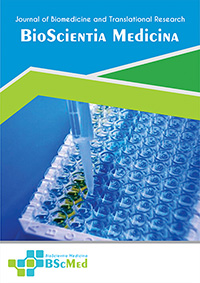Main Article Content
Abstract
Background: Repeated heating of cooking palm oils at high temperatures generates various toxic compounds, including lipid peroxidation products. These compounds are implicated in various diseases through oxidative stress and inflammation. This systematic review aims to evaluate the histopathological effects of thermally oxidized cooking oil (TOCO) consumption on the brain, heart, liver, and kidney, focusing on the roles of lipid peroxidation and inflammation.
Methods: A systematic search was conducted in PubMed, Scopus, and Web of Science databases using predefined keywords and inclusion/exclusion criteria. Studies published between 2013 and 2024 investigating the histopathological effects of TOCO on the specified organs were included. Data on histopathological changes, markers of lipid peroxidation (malondialdehyde [MDA], 4-hydroxynonenal [4-HNE]), and inflammatory markers (TNF-α, IL-1β, IL-6) were extracted.
Results: Seven studies met the inclusion criteria. The data revealed consistent histopathological changes across all four organs. In the brain, neuronal degeneration, astrogliosis, and microglial activation were observed. The heart exhibited cardiomyocyte hypertrophy, fibrosis, and inflammatory cell infiltration. The liver showed hepatocyte necrosis, steatosis, and inflammation. The kidneys presented with tubular necrosis, glomerular damage, and interstitial fibrosis. Elevated levels of MDA and 4-HNE were consistently reported in all affected tissues, along with increased expression of TNF-α, IL-1β, and IL-6.
Conclusion: Consumption of TOCO induces significant histopathological damage in the brain, heart, liver, and kidney. The observed damage is strongly associated with increased lipid peroxidation and inflammatory responses. These findings highlight the potential health risks associated with consuming repeatedly heated cooking oils and underscore the need for public health awareness and strategies to mitigate these risks.
Keywords
Article Details
As our aim is to disseminate original research article, hence the publishing right is a necessary one. The publishing right is needed in order to reach the agreement between the author and publisher. As the journal is fully open access, the authors will sign an exclusive license agreement.
The authors have the right to:
- Share their article in the same ways permitted to third parties under the relevant user license.
- Retain copyright, patent, trademark and other intellectual property rights including research data.
- Proper attribution and credit for the published work.
For the open access article, the publisher is granted to the following right.
- The non-exclusive right to publish the article and grant right to others.
- For the published article, the publisher applied for the Creative Commons Attribution-NonCommercial-ShareAlike 4.0 International License.





